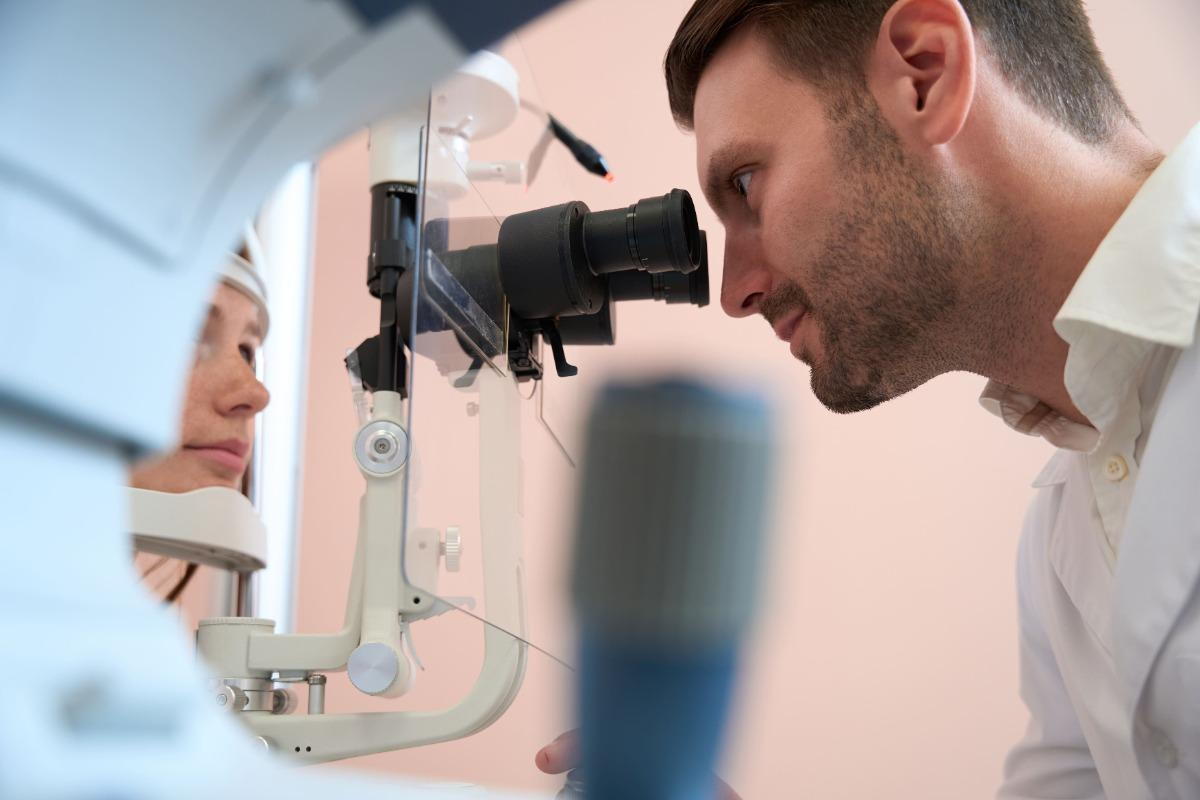All Categories
Featured
Table of Contents
In recent times, innovation has made significant advancements in the area of vision correction, supplying individuals with more reliable, comfortable, and individualized choices than ever in the past. From cutting-edge operations to cutting-edge glasses, innovation is reshaping how we come close to vision correction. Below's an exploration of exactly how these developments are improving the choices available for those looking for vision improvement.
Current modern technologies, such as wavefront-guided LASIK, enable even more tailored therapy by mapping the distinct flaws in an individual's eye. This personalized strategy can cause much better visual results and less negative effects, making laser vision adjustment a prominent selection for those seeking to reduce or eliminate their reliance on glasses or get in touch with lenses.
New multifocal and fitting IOLs permit for a more seamless transition between far-off and near vision. These advanced lenses are designed to minimize the reliance on analysis glasses after cataract surgical treatment, enhancing the total lifestyle for patients. Technologies such as toric IOLs also assist remedy astigmatism, better boosting aesthetic clearness.
![]()
In addition, flexible lenses that adjust their color based on light exposure can supply comfort and security from UV rays, making certain optimum aesthetic quality in varying conditions. Technologies like these not only deal enhanced vision yet also improve the overall experience for individuals.
Furthermore, there are specific contact lenses designed for particular vision concerns, such as ortho-k lenses that carefully reshape the cornea over night to decrease myopia throughout the day. These advancements make it easier for clients to discover reliable and comfortable services customized to their lifestyle and vision needs.
Telemedicine allows clients to receive follow-up treatment and adjustments to their vision adjustment plans effectively. This raised access guarantees that people can obtain timely treatment and make informed choices regarding their vision health and wellness.
AI can likewise play a function in individualizing treatment plans for vision adjustment, guaranteeing that clients obtain one of the most efficient and customized options for their certain requirements.
1. Laser Vision Improvement.
Among one of the most remarkable advancements in vision adjustment is the growth of laser vision modification treatments, such as LASIK (Laser-Assisted Sitting Keratomileusis) and SMILE (Small Cut Lenticule Extraction) These minimally invasive surgical procedures utilize precision lasers to improve the cornea, allowing light to concentrate appropriately on the retina.Current modern technologies, such as wavefront-guided LASIK, enable even more tailored therapy by mapping the distinct flaws in an individual's eye. This personalized strategy can cause much better visual results and less negative effects, making laser vision adjustment a prominent selection for those seeking to reduce or eliminate their reliance on glasses or get in touch with lenses.
2. Improvements in Intraocular Lenses (IOLs)
For individuals that are not ideal prospects for laser surgery, developments in intraocular lenses (IOLs) have actually changed cataract surgery and vision improvement for those with presbyopia (age-related problem in seeing close objects)New multifocal and fitting IOLs permit for a more seamless transition between far-off and near vision. These advanced lenses are designed to minimize the reliance on analysis glasses after cataract surgical treatment, enhancing the total lifestyle for patients. Technologies such as toric IOLs also assist remedy astigmatism, better boosting aesthetic clearness.
3. Smart Glasses and Wearable Innovation.
The integration of modern technology right into glasses has actually resulted in the introduction of clever glasses and wearable devices that improve vision correction. As an example, smart glasses furnished with increased reality (AR) can overlay electronic information onto the real world, helping people with reduced vision or visual disabilities.
In addition, flexible lenses that adjust their color based on light exposure can supply comfort and security from UV rays, making certain optimum aesthetic quality in varying conditions. Technologies like these not only deal enhanced vision yet also improve the overall experience for individuals.
4. Call Lens Innovations.
Call lens innovation has actually likewise advanced considerably, offering people with a variety of choices to fulfill their requirements. Recent developments include daily disposable lenses, which supply ease and health, and prolonged wear lenses that can be put on constantly for numerous days.Furthermore, there are specific contact lenses designed for particular vision concerns, such as ortho-k lenses that carefully reshape the cornea over night to decrease myopia throughout the day. These advancements make it easier for clients to discover reliable and comfortable services customized to their lifestyle and vision needs.
5. Telemedicine and Remote Eye Treatment.
Innovation is not only boosting the tools utilized for vision modification yet additionally boosting access to eye treatment services through telemedicine. Clients can currently have virtual examinations with eye care specialists, making it easier to talk about vision issues and explore correction alternatives without needing to see a facility physically.Telemedicine allows clients to receive follow-up treatment and adjustments to their vision adjustment plans effectively. This raised access guarantees that people can obtain timely treatment and make informed choices regarding their vision health and wellness.
6. Expert System (AI) in Eye Care.
The integration of man-made knowledge (AI) in eye treatment is transforming how vision modification is come close to. AI algorithms can examine imaging data from retinal scans and various other analysis tools, assisting eye care specialists discover problems like diabetic person retinopathy and macular degeneration previously and more properly.AI can likewise play a function in individualizing treatment plans for vision adjustment, guaranteeing that clients obtain one of the most efficient and customized options for their certain requirements.
Conclusion.
The developments in technology are considerably boosting vision adjustment options, offering individuals more reliable, comfortable, and personalized options than ever before. From laser vision correction and innovative IOLs to wise eyeglasses and AI-driven diagnostics, these growths are improving exactly how we approach vision health.Latest Posts
Experience the Flavorful Price of Yesterday's Pub Event catering
Published May 15, 25
1 min read
Savor with a View: Boat Up to Deauville Inn’s Coastal Patio
Published May 09, 25
2 min read
Appreciate the Tastes of Yesterday's Pub
Published May 08, 25
2 min read